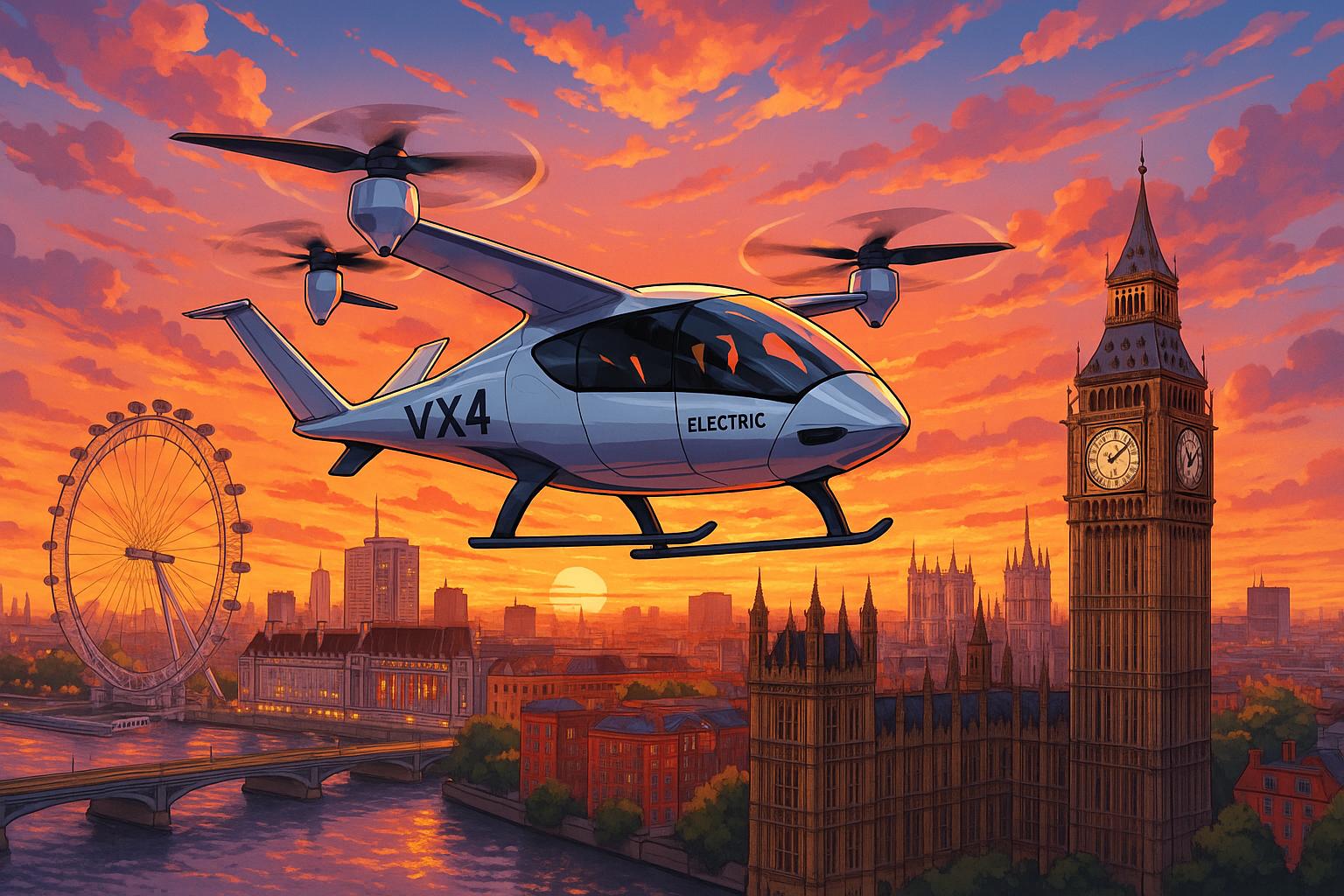Britain is on the cusp of a transformative shift in urban mobility, with the successful first journey of the VX4 electric flying taxi—developed by Bristol-based Vertical Aerospace—heralding a new era for air travel. This significant milestone marks the first time a flying taxi has completed a cross-country trip within normal airspace in European aviation history. The Government’s backing for this initiative, bolstered by a £20 million investment aimed at commercialising drone and flying taxi technologies by 2028, signifies a commitment to embracing innovative transport solutions.
Equipped to carry one pilot and up to four passengers, the VX4 can travel at speeds of up to 150 mph, offering a range of 100 miles. Chief test pilot Simon Davies expressed his enthusiasm after the landmark flight, stating, “Taking the aircraft beyond the airfield... was truly special.” He highlighted the aircraft's enjoyable flight experience, noting that it was not only safe but also smooth and quiet, which sets it apart in the evolving eVTOL (electric Vertical Take-Off and Landing) market.
Given the UK's complex transportation landscape, industry experts are optimistic about the potential for flying taxis to significantly improve connectivity. For example, a trip from Brighton to Heathrow, which typically takes over two hours by car, is anticipated to only require about 20 minutes via air taxi. Such efficiency aligns perfectly with rising demands for faster and more sustainable urban transport options.
Vertical Aerospace is not alone in this endeavour; Joby Aviation, a Californian competitor, has also made strides in the UK. Recently, Joby announced a partnership with Virgin Atlantic to launch its air taxi service, which promises to provide seamless, zero-emission journeys. This partnership aims to establish hubs at Heathrow and Manchester Airport. Joby’s electric air taxi can reach a maximum speed of 200 mph, thereby offering an exciting alternative to current travel options. Joby is also focused on delivering its service well before 2030, targeting regions in the UK where traditional transport is less effective, enhancing accessibility to critical urban areas.
Vertical Aerospace’s relationship with Honeywell, another key player, is poised to accelerate the certification of its systems, crucial for its plans to operationalise the VX4 by 2028. This collaboration, potentially worth up to $1 billion, reinforces Vertical’s commitment to meet production demands and navigate regulatory landscapes effectively. Such partnerships highlight the vigorous competition among air taxi startups as they pave the way for urban air mobility solutions while meeting rising sustainability standards.
Meanwhile, the government's establishment of the Regulatory Innovation Office aims to streamline the certification process and mitigate bureaucratic hurdles, enabling quicker adoption of these technologies. Transport Minister Mike Kane has reiterated the government's focus on maximising the benefits emerging from future flight technologies, including flying taxis. Initiatives like these are pivotal in fostering an environment conducive to rapid development and deployment of sustainable transport options.
The journey towards integrating flying taxis into everyday life is not without challenges. As Vertical Aerospace navigates new investment landscapes—like its recent partnership with Mudrick Capital, which has seen a restructuring of its financial obligations—the push for innovative transport continues to face pressure from market realities. Nonetheless, the commitment of companies like Vertical Aerospace and Joby Aviation, supported by significant governmental backing, showcases a shared vision of transforming urban transport.
As the UK prepares to embrace this new frontier of mobility, the flying taxi sector illustrates a blend of innovation, partnership, and policy commitment. With multiple stakeholders working towards this shared goal, the dream of airborne taxis is rapidly becoming a tangible reality, promising to fundamentally reshape travel for generations to come.
Reference Map:
- Paragraph 1 – [1], [2]
- Paragraph 2 – [1], [3], [4]
- Paragraph 3 – [2], [5]
- Paragraph 4 – [1], [6]
- Paragraph 5 – [1], [2], [3]
Source: Noah Wire Services
